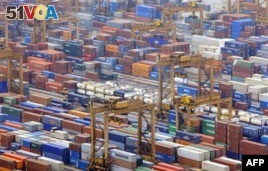The Asia-Pacific region currently accounts for about a third of the global population, one-quarter of global GDP, a major share of global growth, 26 per cent of U.S. exports, $1.2 trillion in two-way trade with the United States, and a huge proportion of biodiversity vulnerable to climate change.

Containers are seen in a port in Singapore. There is $1.2 million in trade between the U.S. and the Asia-Pacific region.
Recognizing that America’s future prosperity and security are intertwined with the Asia-Pacific region, U.S. President Barack Obama made a strategic commitment to rebalance U.S. efforts and investments toward Asia.
A fact sheet, recently issued by the U.S. Department of State to the press in Washington, D.C., stated that “the United States will remain a strong, reliable, and active partner in the [Asia-Pacific] region and is investing diplomatic, public diplomacy, military, and assistance resources in a way that is commensurate with our comprehensive engagement.”
In expanding engagement with the Asia-Pacific, the United States aims to modernize and strengthen U.S. alliances; develop ties with emerging partners and support regional institutions to solve problems based on internationally-recognized rules and norms.
The U.S. aims to increase trade and investment; and expand economic growth; ensure a U.S. military presence that effectively supports U.S. engagement with the Asia-Pacific region; promote democratic development, good governance, and human rights; and expand people-to-people ties.
U.S. engagement has ensured peace and prosperity in the Asia-Pacific region for over 60 years, and its continued engagement will further enhance peaceful development. Currently, the United States is the leading investor in the Asia-Pacific region. U.S. direct investment in 2012 was $622 billion, reflecting a 35 per cent increase since 2009.
These investments support jobs and economic growth both in the United States and in the region, and signify long-term U.S. engagement in the economic growth and development of the Asia-Pacific region.
U.S. assistance is focused on supporting economic integration and trade; enhancing regional security; advancing inclusive economic development; strengthening regional institutions so they can effectively address problems; and addressing health and environmental problems that affect the region and the globe.
“As a Pacific nation that takes our Pacific partnership seriously,” said U.S. Secretary of State John Kerry, “the United States will continue to build on our active and enduring presence.”